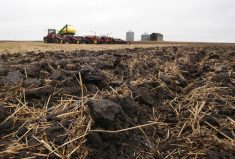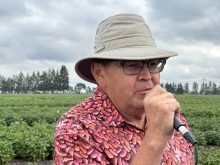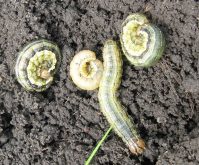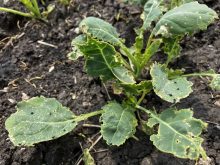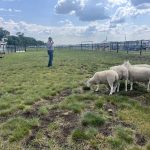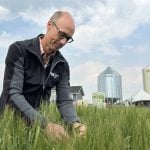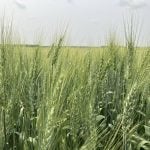Precipitation was variable across agro–Manitoba from May 22 to 28 with values ranging from 0 to 41.7 mm. The Northwest and Southwest regions received the highest amounts of precipitation over the past seven days. Climate normals for total accumulated precipitation from May 1 to May 28 range from 31.6 to 58.3 mm and are based on 30-year historical data. Areas of the Northwest near Drifting River, and the Southwest along the U.S. border, have accumulated near normal precipitation. The majority of the Central and Eastern regions have received less than 50 per cent normal precipitation.
Provincial seeding progress is at about 87 per cent completion, slightly behind the five-year average of 91 per cent for Week 21.
Overview
Read Also
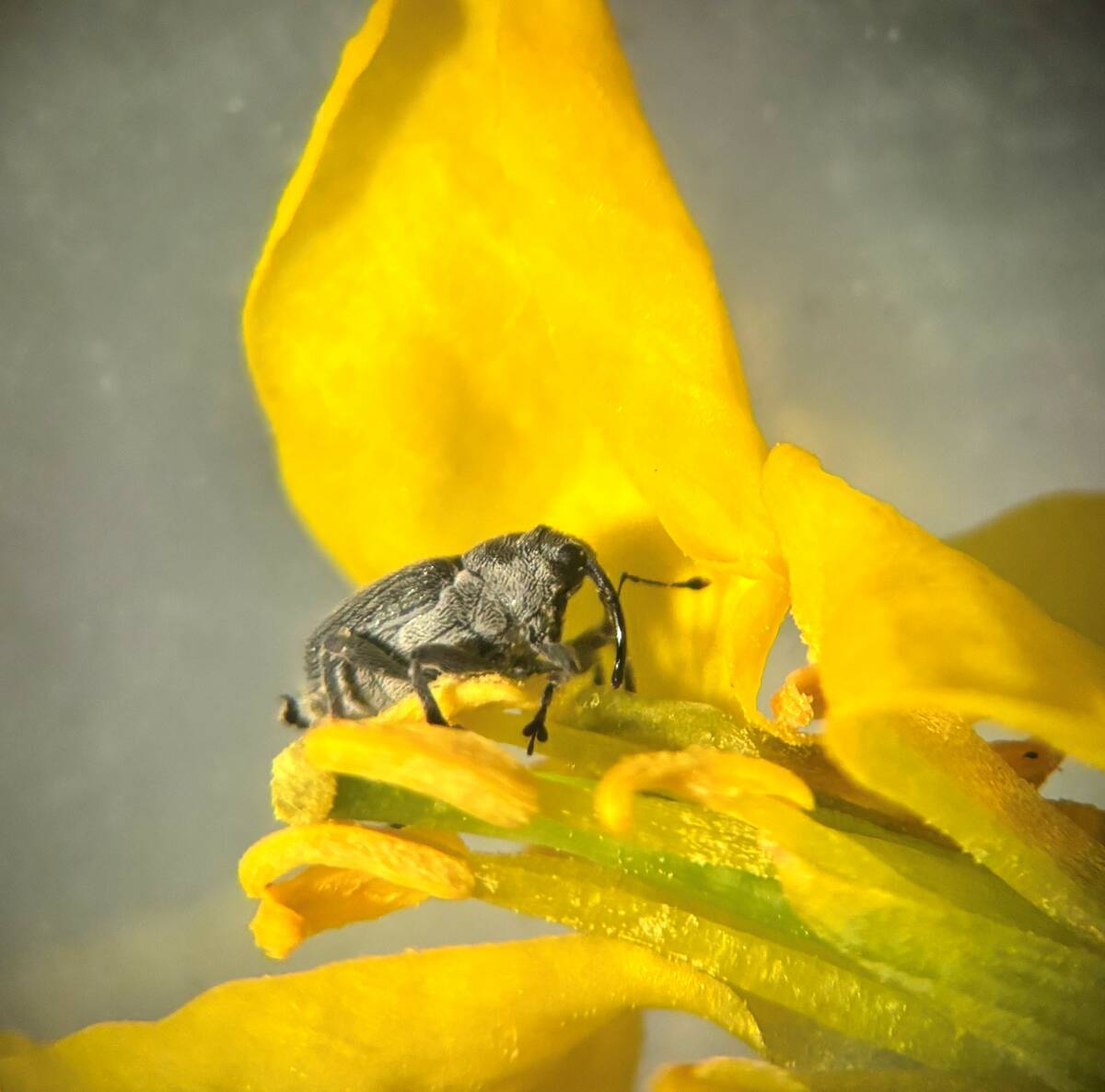
Manitoba sees cabbage seed pod weevil surge
Cabbage seed pod weevil has crossed into true canola pest territory in Manitoba this year, following years of minimal population counts
Seeding progress across the province is wrapping up with recent warm weather. Producers are finishing up planting with 95-99 per cent of spring cereals, 95 per cent of corn, 90 per cent of soybeans, and 80 per cent of canola planted. It is expected that all planting will be complete at the end of the week. Good emergence is being reported on spring cereals and field peas. Winter cereals are moving along rapidly with earliest fields approaching the boot stage. Topsoil moisture is dry. Later-planted crops such as dry beans have to be planted slightly deeper in order to capture moisture for germination. A rain across most regions would be welcomed. In most regions the soil surface is getting dry due to high temperatures and wind.
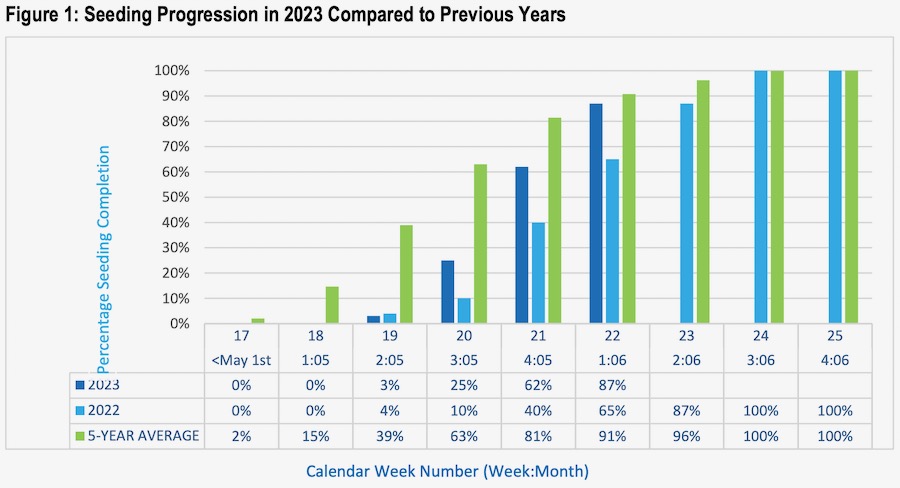
Cereals
Most advanced winter cereal crops are approaching the boot stage and growing rapidly. They are reported to be in good to excellent condition with very little winterkill.
Producers made rapid progress on spring cereals over the last week with most regions in the 95 per cent planted range.
Most cereal grains range from germinating/emerging to the three leaf stage with the majority of acres in the one- to three-leaf stage.
Spraying of cereals has been delayed in some cases due to recent windy days. With the drier top soil, weed pressure has been reduced.
Corn planting is 95 per cent complete. Crop stage ranged from VE to V3 stage. Herbicide applications have begun, particularly for fields that did not receive any pre-emergent herbicides.
Oilseeds
Canola planting has made significant progress during the last week with approximately 80 per cent of the projected acres being planted across the province. The last of the canola fields will be finished up this week.
Some concerns from producers with canola seed sitting in dry soil, rainfall would be welcomed.
Flea beetles are present in canola but no general feeding.
Sunflower planting has also increased and is at 92 per cent complete. Producers are monitoring fields for cutworms.
Sunflower growth stages range from germinating/emerging to V2 stage for the earliest seeded fields.
Pulses and Soybeans
Field pea planting is at 99 per cent complete across the province. Good emergence has been noted on most pea fields around the province with the most advanced fields in the third to fourth node stage.
Soybean planting has progressed with 90 per cent complete.
Dry bean planting will be wrapping up this week with approximately 75 per cent complete to date. Overall seeding conditions have been acceptable for dry bean planting; however there have been some reports that producers are having to plant deeper than in previous years in order to reach moisture.
Forages
Hay fields are responding well to the heat and moisture, with timothy heading out and alfalfa ranging 25-35 cm in height.
Conditions are becoming dry across the Eastern and Central regions and rain is needed. Alfalfa fields are growing rapidly and are in the late vegetative to early bud stage. Some dairy farms are planning to begin first cut towards the end of this week or the beginning of next. Pasture growth in Eastern Region is slowing due to lack of soil moisture, particularly on the lighter soils.
Hayland condition was rated as good overall while pasture condition was rated as mostly fair with some pastures in good condition.
Livestock
Livestock water supplies are adequate but additional moisture would ensure sufficient quantities for the grazing season.
Dugouts are approximately three quarters full. Majority of beef cattle in the southern part of the Eastern region are out on pasture, whereas producers in the north are planning the move sometime this week.
Most cattle have been turned out to pasture and yards have been drying up with the warmer drier weather.
Cattle sales at auction are declining as we near the end of the spring run, prices remain strong.
REGIONAL
Southwest
Warm and windy conditions for most of the region during last week. Areas like Dand, Deloraine, Virden, Waskada, Hamiota, Newdale received 15-35 mm of rain. Other areas received 2-5 mm. The soil surface is getting dry due to high temperatures and winds. The majority of areas will need a good rain in the coming days.
Excellent progress has been made during the last week, with seeded acres at 85 per cent complete for the region. Most report good seedbed conditions. Crops are germinating and emerging well.
Field peas are advancing with most of the early seeded fields in the 3rd to 4th node and getting closer to the herbicide application stage.
The majority of spring cereals are in, and estimated at 95 to 100 per cent complete. Spring wheat is emerging to two leaves and some early three leaves. Emergence is rated as good to excellent.
Canola estimated at 75 per cent complete. Early-seeded canola is at the cotyledon stage. Flea beetles are present, but not feeding to a large degree.
Soybean planting is continuing with 75 per cent completed. Some early planted fields are at the cotyledon stage.
Sunflower seeding is at 85 per cent complete.
Grain corn is 85 per cent done and silage corn is 40-50 per cent complete. Some early seeded corn is at the VE to V3 stage.
Northwest
Most of the region received welcome precipitation, with the exception of a few areas. Highest accumulated precipitation for the week was received in The Pas with approximately 42 mm. Although areas that received precipitation slowed seeding progress, the rain was welcomed to help with germination and growth.
Monday afternoon system brought intense localized storms to some areas. Ashville, and Gilbert Plains area seemed to receive the most precipitation, reporting upwards of 50 mm of rainfall in a short period of time.
Spring wheat across the region sits at approximately 95 per cent complete. Approximately 75 per cent of the spring wheat has emerged and looks uniform. Some in-crop herbicide has begun where appropriate stages have been reached.
Field peas are at 99 per cent complete, emergence looks good and uniform and heading into the vegetative stages.
Soybeans are approximately 85 per cent planted across the region and beginning to emerge.
Canola seeding is approximately 75 per cent complete in the Dauphin area and more advanced in the Swan River/Roblin area at 85 per cent complete. The Pas area is approximately 70 per cent complete. Earliest seeded canola is emerging.
Central
Soil moisture generally remains good, high temperatures and strong wind has resulted in the soil moisture at seeding depth becoming inadequate for germination in many regions. This has mostly affected canola, soybean and dry beans. Although some farmers are still seeding, most have been switching from seeding to herbicide application this week.The switch has been made difficult due to persistent strong winds. Warmer temperatures have supported the emergence of weeds such as pigweeds and green and yellow foxtails.
Much of the earlier seeded canola has emerged, with some as advanced as the two leaved stage. Flea beetles and cutworms have been problematic for some farmers, especially in the Plumas, Neepawa, and Pilot Mound areas.
Dry bean planting sits at approximately 75 per cent complete and will wrap up by the weekend. Some producers have been expressing concern with having to plant down to 2 inches to get into moisture. Producers having to go any deeper than that have chosen to plant to 1.5 inches and wait for rain.
Most spring cereals have emerged and look well, with the most advanced being around the 2 leaf stage.
The most advanced soybeans have reached V1. Rolling is taking place on some soybean fields.
Corn staging ranges from VE to V3 stage with herbicide applications occurring in fields.
Peas range from emergence to third node stage. Weed control is an issue for some pea producers, especially if they didn’t apply pre-emergent herbicide.
Almost all potatoes are in the ground. Producers are hilling potatoes and applying pre-emergent herbicide.
Eastern
There was no appreciable rainfall in the Eastern region over the last week. As well, most days during the reporting period had daytime highs and nighttime lows that were well above normal for this time of year. The sunny and hot weather was accompanied by strong southerly winds, which resulted in low humidity conditions and soil drying. Smoke was very prevalent in the air at the start of last week but was replaced by dust from gravel roads and fields as the week progressed. Across the region, about 95 per cent of seeding was complete and the spray season had begun.
Approximately 95 per cent of spring wheat, barley and oat acres are seeded. Crop stage ranged from germinating/emerging to the three-leaf stage with the majority of acres in the one- to three-leaf stage. Herbicide applications have begun and will continue this week as the weather allows.
About 95 per cent of sunflower acres have been planted with only limited acres remaining in southern and central districts. Crop growth stage ranged from germinating/emerging to V2 stage for the earliest seeded fields. Growers were monitoring fields for the appearance of cutworms.
Canola was about 95 per cent seeded with remaining acres to be finished in the coming days. Crop stage ranged from germinating/emerging to first leaf stage. Producers were monitoring fields for flea beetles and were concerned that the hot, dry weather would make canola seedlings less able to withstand insect damage. Growers were also concerned about canola emergence as weather conditions continue to dry out top soil.
This was particularly a concern for fields where significant pre-seeding tillage had been done or where seed was broadcast and incorporated. Those still seeding canola were concerned with seeding too deep as they tried to place seeds into sufficient moisture.
Soybeans are about 95 per cent planting with crop stage ranging from germinating/emerging to unifoliate leaf for the earliest planted crop. For the more recently seeded fields, producers were concerned with topsoil moisture availability at seeding depth. Those seeding the few remaining acres were similarly challenged with seeding too deep as they tried to place seeds into sufficient moisture, or chose to seed more shallow and bank on timely rains.
The field pea crop ranged from the second to fourth node growth stages with post emergent rolling and herbicide applications ongoing when weather allowed. Field peas were putting on new nodes very rapidly in the warm temperatures and growers had to be vigilant about monitoring crop progress to avoid missing their rolling or herbicide application window.
Interlake
Spotty showers passed through the region ranging from 12-25 mm over the weekend. It’s very dry in areas that did not receive any rain. Rainfall for Arborg for May is 33 per cent of normal according to Manitoba Agriculture weather station. Top soil conditions are dry and rainfall is needed.
Seeding is wrapping up in the North and South Interlake area. In general, 90-95℅ done for all crops. The North Interlake area is making good progress but some canola is still left to be seeded. South Interlake area is about 90 per cent complete while in the North Interlake area is about 80 per cent complete.
Cereal crops have emerged and look good. Spraying has been delayed due to the windy conditions.
Canola is starting to emerge and although flea beetles have been reported, minimal feeding has been observed. Producers are encouraged to monitor their canola fields for feeding.
Soybeans are 75 per cent planted in the region with the earliest planted fields starting to emerge. The last 25 per cent of the acres will be seeded by the end of this week.







